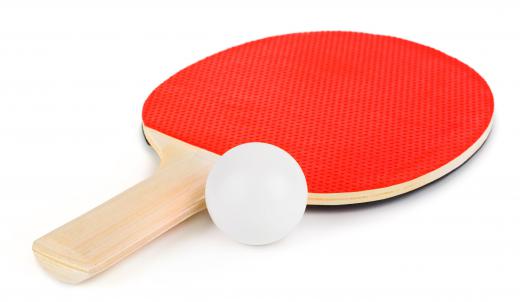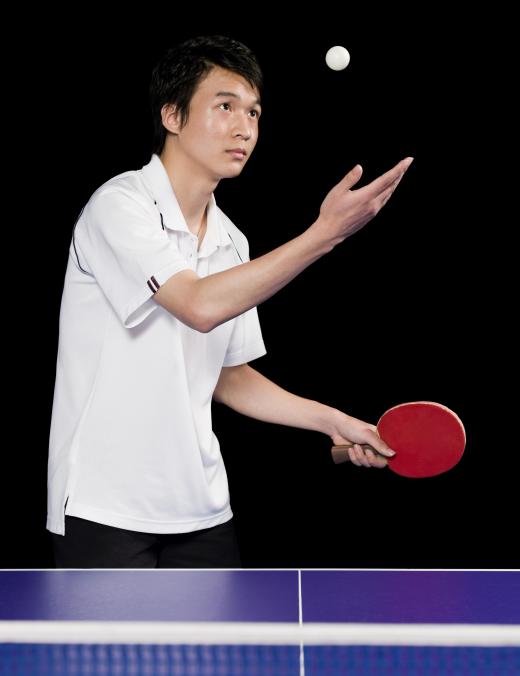Table tennis, better known as Ping-Pong, is the second most played sport in the world, beat only by soccer. Table tennis is a form of tennis played on a special table rather than on a tennis court. Table tennis rackets resemble paddles, and the table tennis ball which is about the size of a golf ball, is smooth, hollow, extremely light, and bounces easily on the hard table top.
The table upon which table tennis is played is rectangular and of a dark color, usually green, with a white sideline along each side and edge. The playing surface is divided into two equal courts by a low, vertical net running parallel to the edges, suspended by clamped posts located midway on each side. The net is about 6 inches (15.25 cm) high.
Each of the two courts is divided yet again by a white center line running perpendicular to the net, or parallel with the sides. This creates two half-courts on each side, used when playing doubles, or two to a team.

Rackets are circular in shape with a short handle, made mostly of wood, and are flat. The striking surface is covered with evenly-pimpled rubber, but the blade of the racket is left bare, as is the handle. In table tennis if a player opts to switch to a new racket in a game, the player must offer the new racket to his opponent for examination before resuming the game.

To begin a game the server must hold the ball in the palm of their open hand, and then toss it upwards for at least 6.29 inches (16 cm). As the ball drops, the server must hit it in such a way that it bounces on his side of the table, then strikes the ball so that it first hits in his court before passing over the net to strike the opponent's court. The ball must not swipe any part of the net on a serve or the serve is invalid.
To return the serve, the receiver strikes the ball so that it passes over or around the net to land on the opposite side of the table. It may swipe the net as long as it passes over.

When the ball is in play it is referred to as a rally. Points are scored when the server fails to make good on a serve, or when the receiver misses a good serve or is unable to return it successfully. Likewise, once the serve and return are successful, whoever breaks the rally by missing the ball, hitting it into the net, or failing to strike the opponent's court on the return, is penalized by awarding the opponent one point.
The first person or team to rack up 11 points wins, unless the score becomes tied at 10 points each. In this case the first to reach a two-point lead wins. A match consists of winning the best of any odd number of games.

Table tennis came from England toward the end of the 1800's, where it was enjoyed as a social sport. At that time it was called gossima, and flim-flam, but the name that stuck was ping-pong because of the noise the ball made as it bounced on the table. In the 1920's the game was revived in Europe as table tennis and The International Table Tennis Association (ITTF) was formed in 1926. Japanese and Chinese players dominated the sport through the 50s, 60s and 70s, and table tennis became an Olympic event in 1988.
